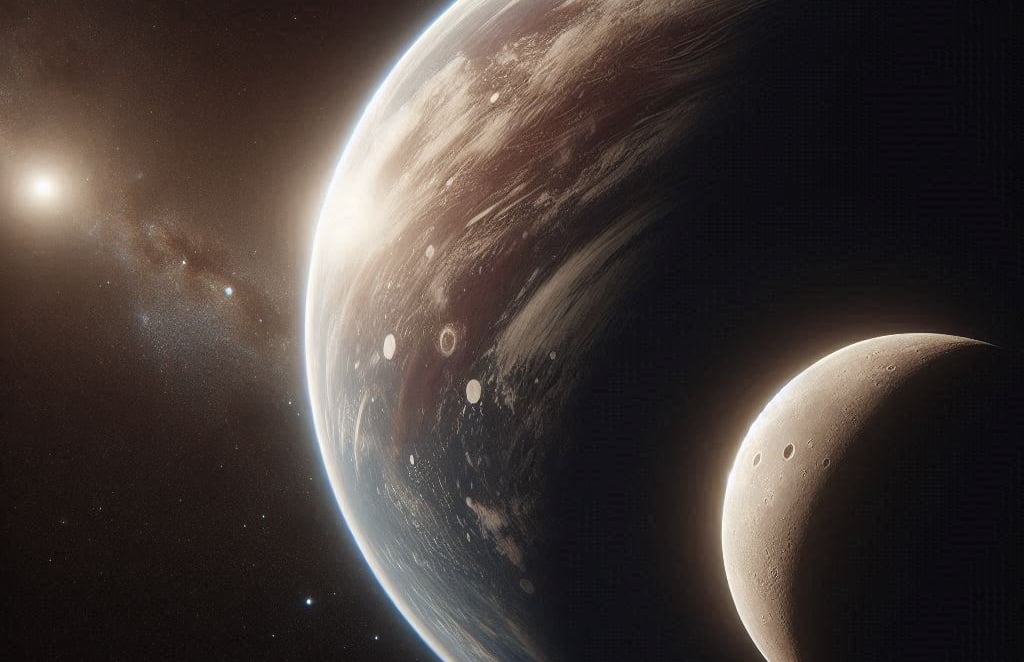(NLDO) - The strange situation of the Earth and the Moon more than half a billion years ago contributed significantly to our existence today.
According to a study recently published in the journal PNAS, an Earth day about half a billion years ago was 2.2 hours longer than it is now, while the Moon was also 20,000 km farther away than it is now.
It was a period lasting from 650-500 million years ago, which created what is known as the "Cambrian biological explosion".

The Earth and the Moon went through periods of great change hundreds of millions of years ago - Photo AI: Anh Thu
According to Live Science, a research team led by geologist He Huang from Chengdu University of Technology (China) attempted to clarify the history of Earth's rotation by looking at data collected from rock layers from the marine environment dating back 700-200 million years ago.
These rocks help reconstruct how tides have changed on the planet's surface, in part because they reveal the thickness of the ocean.
The team combined this data with models of the tidal forces acting between the Moon and Earth to map the rate at which Earth rotated on its axis over the half-billion-year study period.
They eventually discovered a "staircase" pattern in the Earth's rotation, with two periods where the planet's rotation changes rapidly and dramatically, interspersed with periods of stability.
The first period of upheaval was 650-500 million years ago, covering the "Cambrian explosion", the planet's most dramatic biological explosion, when simple organisms suddenly evolved into complex, species-rich multicellular animals, occupying new ecological niches.
The second stage occurred about 340-280 million years ago, corresponding to the period when giant glaciers covered the planet.
During both periods, days were 2.2 hours longer and the Moon was also 20,000 km farther away on average.
During the first stage, days as long as 26.2 hours increased the number of hours the world was exposed to sunlight, promoting photosynthesis and leading to major oxidation events, which allowed life to flourish.
This is because over time, the Moon pulls on our planet.
As a result, at times it drifts away from us, sucking away Earth's kinetic energy, slowing down our planet's rotation, thus lengthening the days.
The second time, the appearance of glaciers quickly turned the globe into a snowball of ice and led to mass extinction.
However, after each mass extinction there are always other biological explosions, when new species arise and fill the ecological niches left by the species that disappeared.
So it can be said that both events have strongly influenced our existence today.
Source: https://nld.com.vn/mot-ngay-trai-dat-tung-dai-262-gio-mat-trang-troi-xa-196240818082256203.htm



































































































Comment (0)